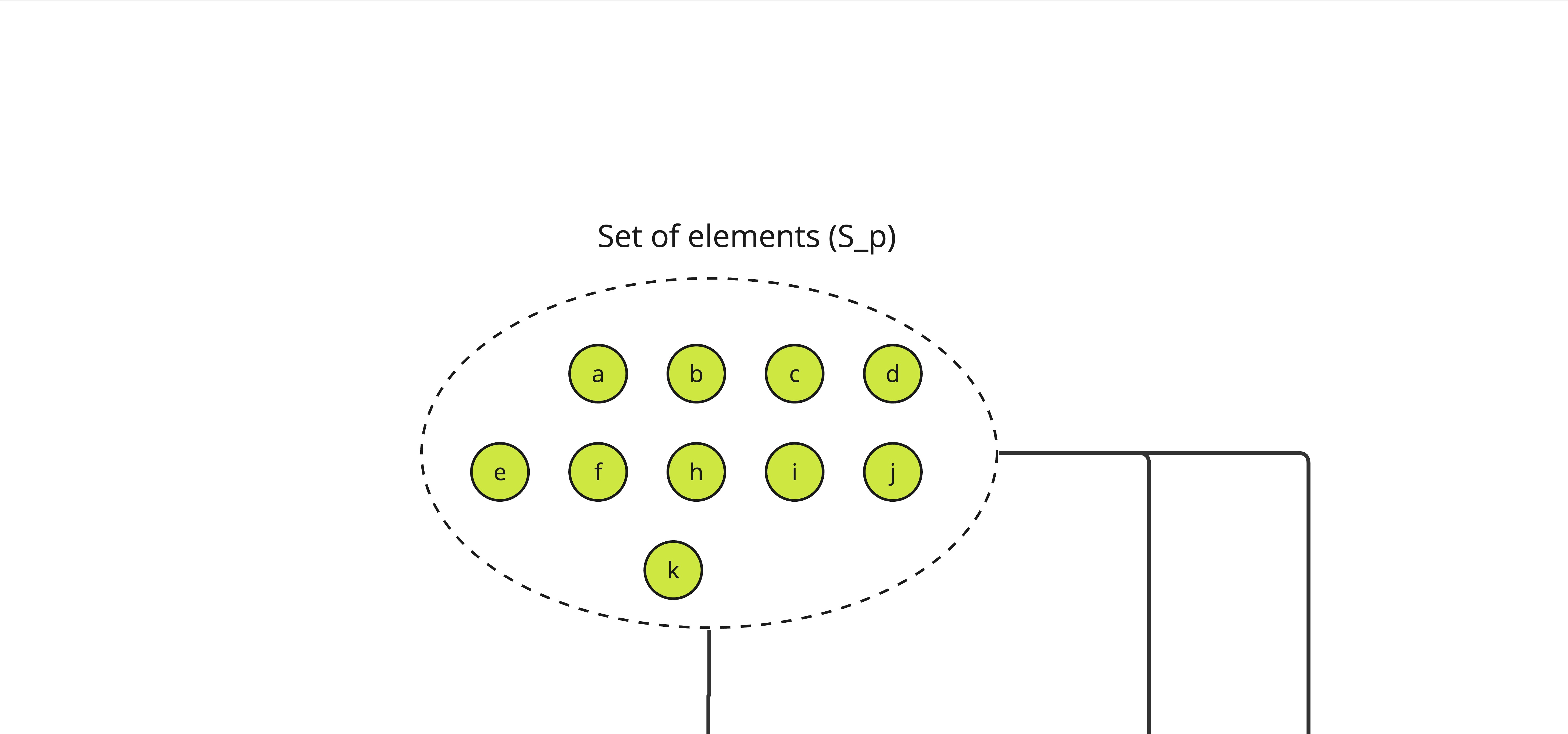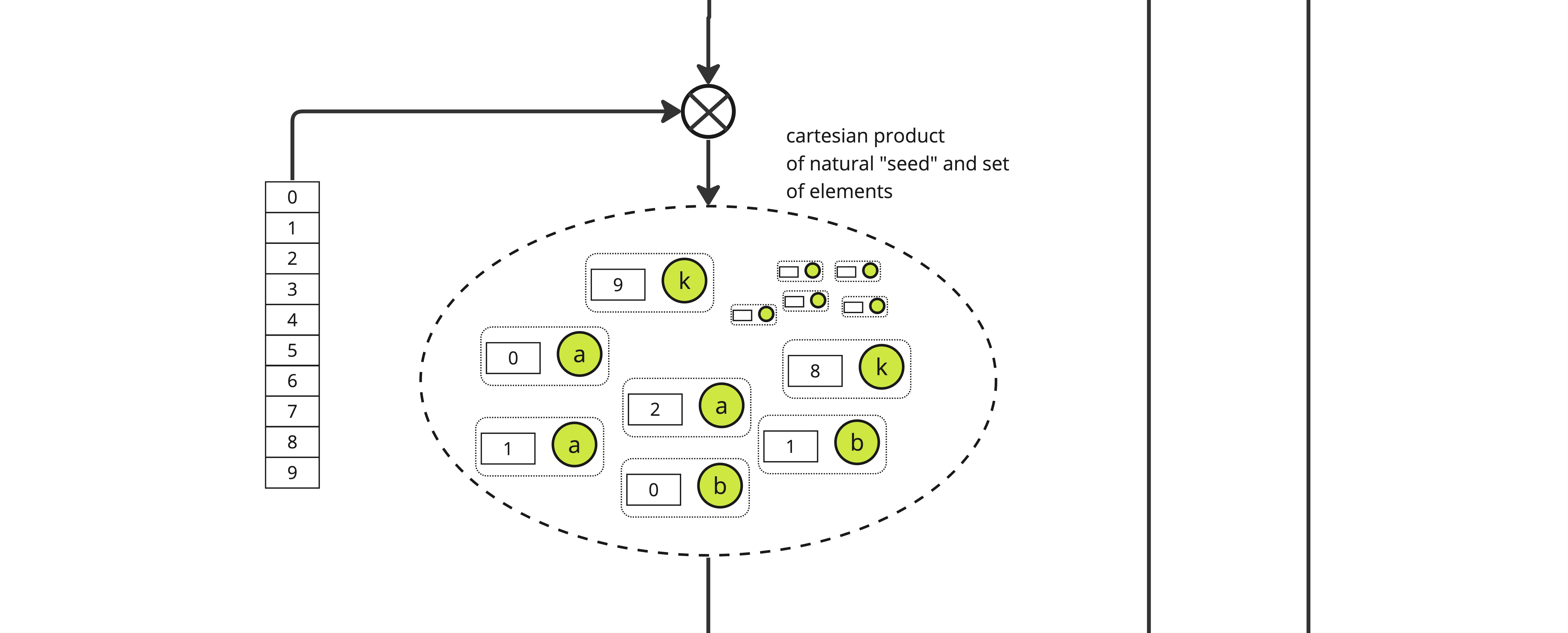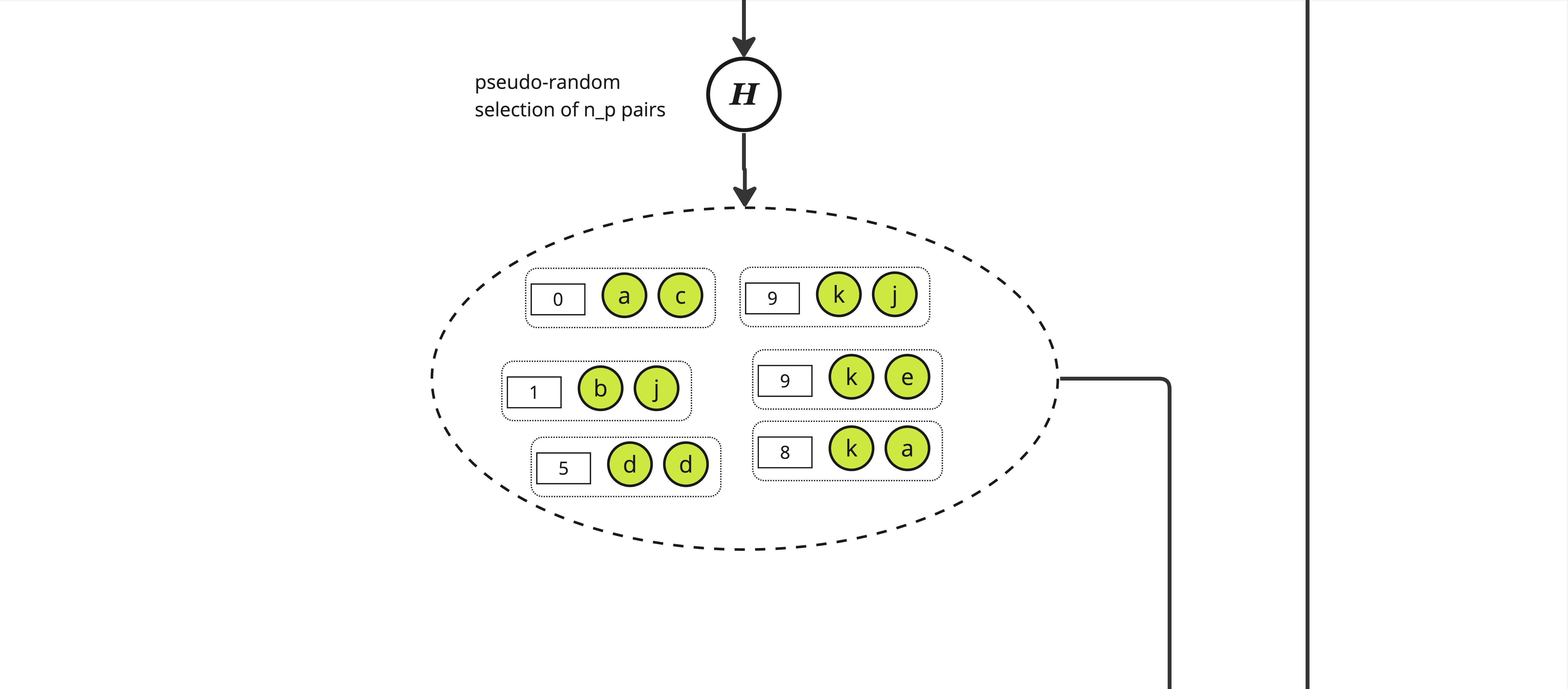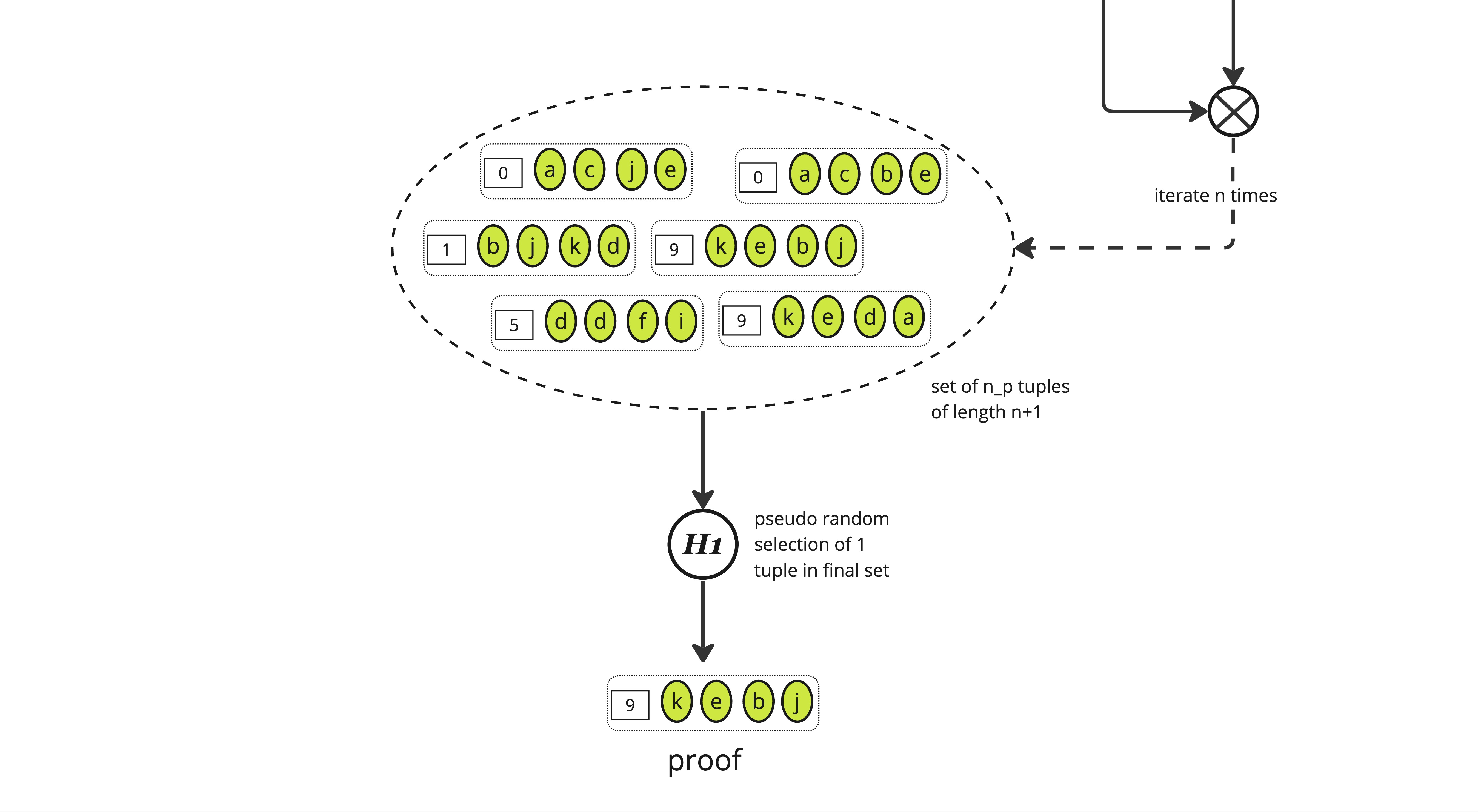Introduction
Approximate Lower Bound Arguments are a form of cryptographic certificates that allow a prover to convince a verifier they know some large set of elements by providing only a small subset of those elements. This excellent X thread provides a good intuition on why ALBAs are useful and how they work, and details of the theory behind this construction are beyond the scope of this introduction and can be found in the paper.
Proving
Here is an alternative graphical representation of how ALBA certificates are produced, using the basic construction. We start with a set denote \(S_p\) of elements such that each is unique and its availability can be asserted by a verifier through some predicate (called \(R\)) in the paper.
Note: The \(S_p\) set can be smaller than the expected maximum number of elements we want to build a proof on, with a lower bound on \(n_p\) the number of expected honest elements.

The first step is to construct the cartesian product of each element of \(S_p\), here called \(a\) through \(k\), with all the integers lower than some parameter \(d\), yielding a set of size \(|S_p| \times d\)

From this set, we pseudo-randomly select \(n_p\) pairs using a "random oracle" \(\mathbb{H}\). \(\mathbb{H}\) is effectively just a hash function and to select the adequate number of pairs we pick those with a hash value modulo \(n_p\) equals to 0, yielding a set of size roughly \(n_p\) of pair of an integer and some item in \(S_p\).
Note: The ratio \(n_p / n_f\) is a key factor when setting the needed length of the proof.

We then expand the set again, creating triples of an integer and 2 elements from \(S_p\) through a cartesian product between the selected pairs and the initial set, yielding a set of size \(|S_p| \times n_p\).

And we again pseudo-randomly select \(n_p\) elements from this new set using the same function \(\mathbb{H}\), yielding a set of triples of approximate size \(n_p\)

This process is iterated \(n\) times according to the protocol parameters (see the paper or the code for details on how these parameters are computed), yielding a set of (roughly) \(n_p\) tuples of length \(n+1\) where each tuple is some "random" integer along with \(n\) items from \(S_p\).
The last stage consists in applying a function \(\mathbb{H}_1\) to select one element from this set which is the final proof.

Verifying
Verifying a given proof \(P\) is straightforward. Given the known share of honest items \(n_p\) and a security parameter \(\lambda\) (set at 128 in the paper) controlling the exponentially decaying probability a proof with dishonest items can be constructed, the verifier needs to check:
- The sequence of hashes from the items in the proof are all 0 modulo \(n_p\),
- The value of \(H_1\) for the whole sequence is 0 modulo some derived parameter \(q\),
- And of course that each item in the sequence is valid w.r.t. the predicate \(R\).